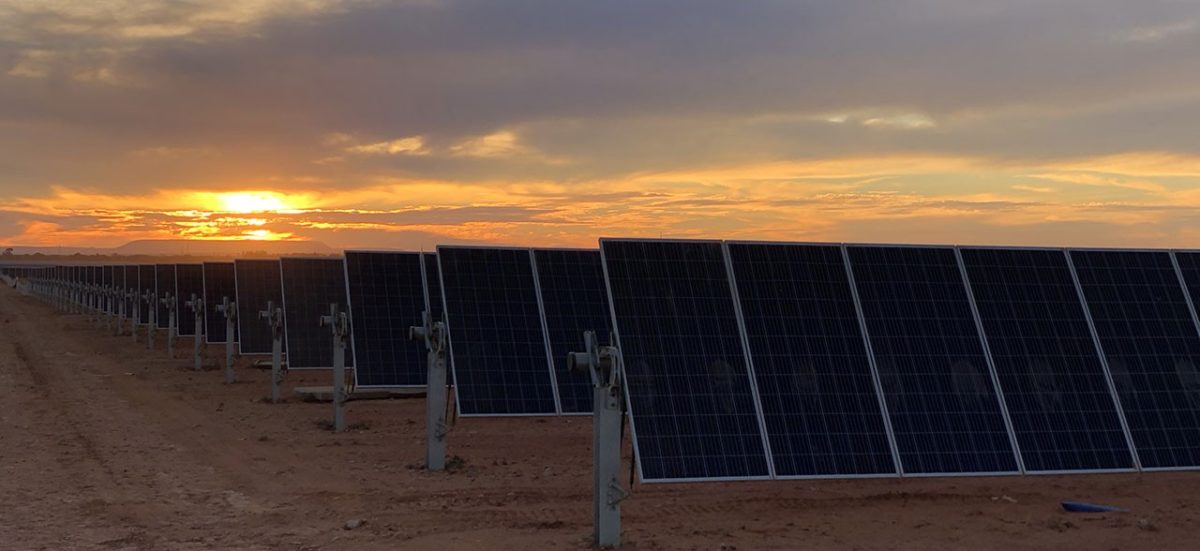The hotbed of utility-scale solar activity, New South Wales, waved through a massive 900 MW solar farm in the last days of 2018, looking to make another major step in its transition to a cleaner energy future.
The Yarrabee Solar Farm, with a price tag of almost $1 billion, will be located in southwest of Narrandera in the Riverina region of western NSW. The project is said to have the potential to power a city of almost one million people.
“When built, this new solar farm will have the capacity to power a city nearly twice the size of Newcastle,” NSW Minister for Energy Don Harwin said welcoming the construction approval.
The Yarrabee project was proposed by Australian developer Reach Solar Energy, which also stands behind the development of the 220 MW/275 MWdc Bungala Solar Project – Australia’s largest completed solar farm to date. Bungala was acquired by Italian power utility Enel and the Dutch Infrastructure Fund in 2017.
The 900 MW Yarrabee is planned to be developed in stages, with hopes for it to begin generating clean electricity in early 2020.
According to the project’s environmental impact statement, construction will be dependent on various factors, including power purchase agreements and availability grid connection to the high voltage transmission network.
The project will cover up to 2600 hectares with approximately three million solar PV panels mounted on around 36,000 single-axis tracking systems. It will utilise 222 inverter stations dispersed across the site. There are also plans for a battery storage system of 35 MW/70 MWh capacity.
Other infrastructure works will involve construction of a new 330 kV high voltage electrical substation adjacent to the existing 330 kV Wagga to Darlington Point transmission line.
The first phase of the project is expected to involve construction of a 300 MW stage, which could start in 2019 and take around 18 months to complete.
Stage 2 and Stage 3 are anticipated to commence in 2020 and 2023 respectively. The project’s EIS states that construction of any phases beyond the initial 300 MWac capacity would only commence once TransGrid has confirmed that adequate grid capacity is available.
It is estimated that between 150 and 200 construction workers would be required on-site each day during typical construction periods for each phase. During peak activities this would increase to a maximum of 450 workers. The operational workforce is expected to consist of 10-15 full-time staff attending the site on a daily basis.
Once fully developed, the Yarrabee Solar Project is expected to generate just over 2,000 GWhr a year, which represents the power consumption of approximately 335,000 homes, over a lifespan of about 30 years.
The project approval followed the release of a new Large-Scale Solar Energy Guidelines developed by the NSW government to lead applicants and the community through the assessment process and site selection for state significant solar farm proposals.
“The new guideline reflects the NSW Government’s strong commitment to NSW’S booming solar energy market,” Harwin said.
It also followed a number of other big PV approvals granted in late December, including: a massive solar+storage project at Darlington Point – a 275 MW solar farm coupled with 100 MWh energy storage facility, the 140 MW Mulwala Solar Farm, the 170 MW Suntop Solar Farm and the 47 MW Gregadoo Solar Farm, rounding off another big solar year for NSW.
According to the government data, six solar farms were commissioned in 2018 alone, representing 305 MW and $475 million in investment, placing the total operating large-scale solar capacity in NSW at around 500 MW across nine projects.
Another seven solar farms were under construction representing 530 MW and around $720 million in investment, while there were almost 70 more solar farms with, or seeking, planning approval in NSW, with capacity to generate more than 10,000 MW.
This content is protected by copyright and may not be reused. If you want to cooperate with us and would like to reuse some of our content, please contact: editors@pv-magazine.com.









By submitting this form you agree to pv magazine using your data for the purposes of publishing your comment.
Your personal data will only be disclosed or otherwise transmitted to third parties for the purposes of spam filtering or if this is necessary for technical maintenance of the website. Any other transfer to third parties will not take place unless this is justified on the basis of applicable data protection regulations or if pv magazine is legally obliged to do so.
You may revoke this consent at any time with effect for the future, in which case your personal data will be deleted immediately. Otherwise, your data will be deleted if pv magazine has processed your request or the purpose of data storage is fulfilled.
Further information on data privacy can be found in our Data Protection Policy.